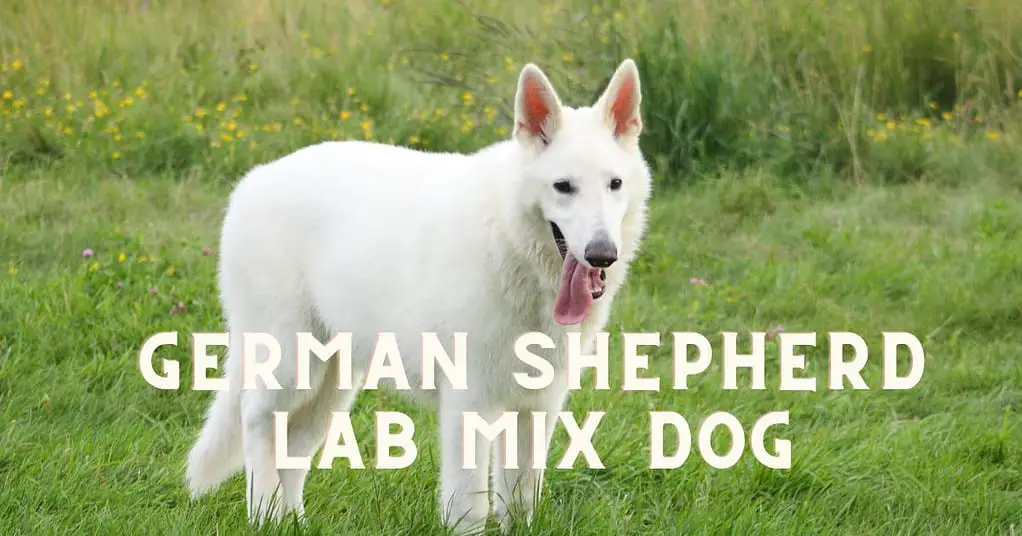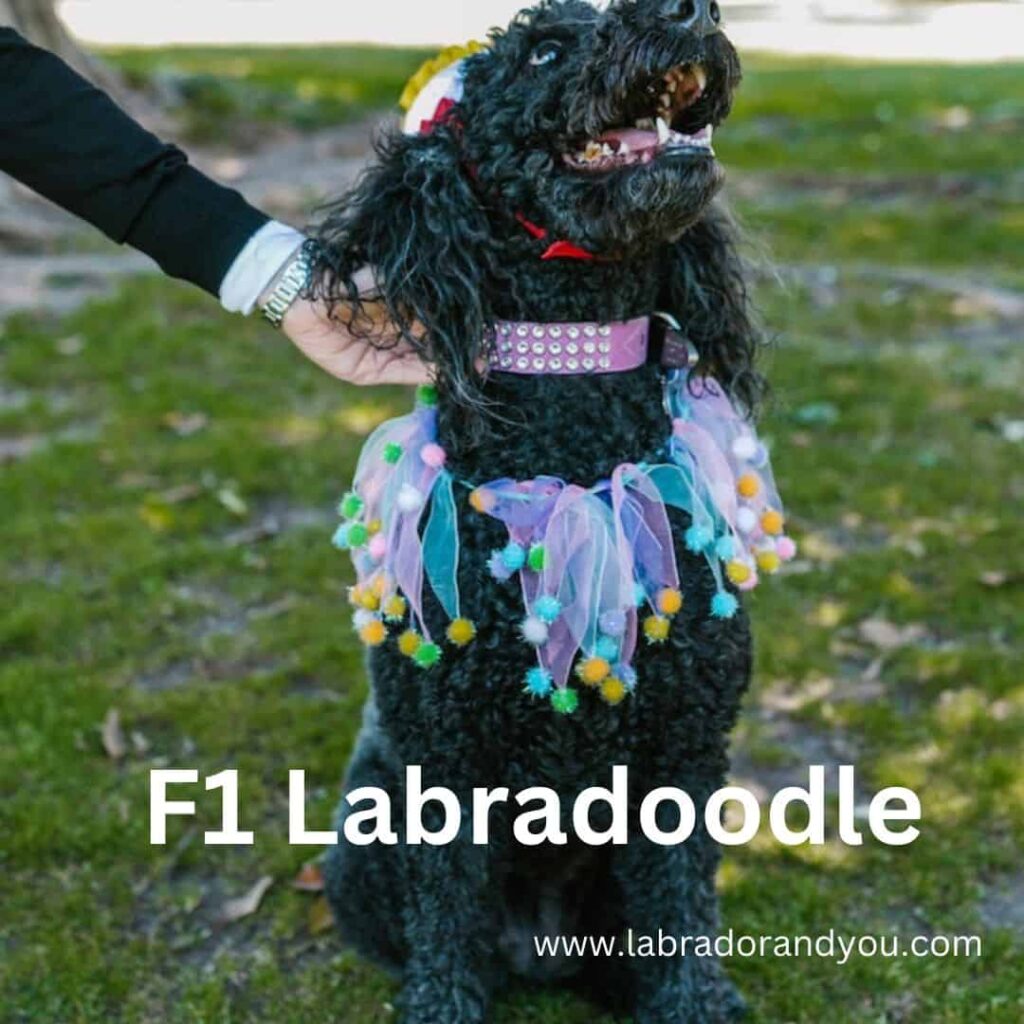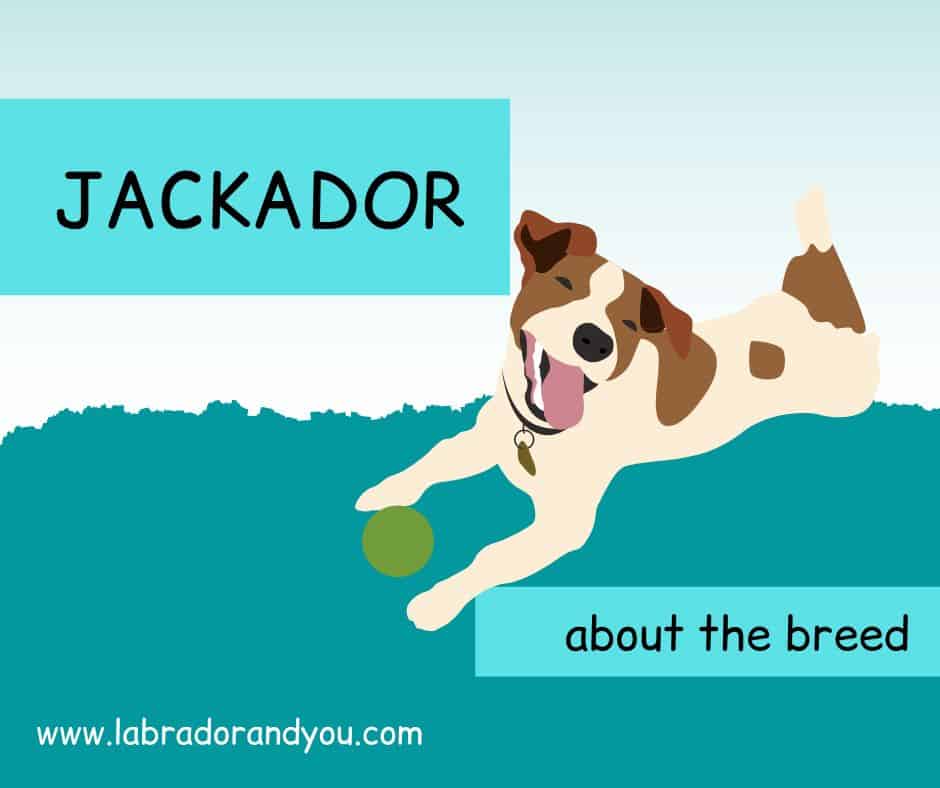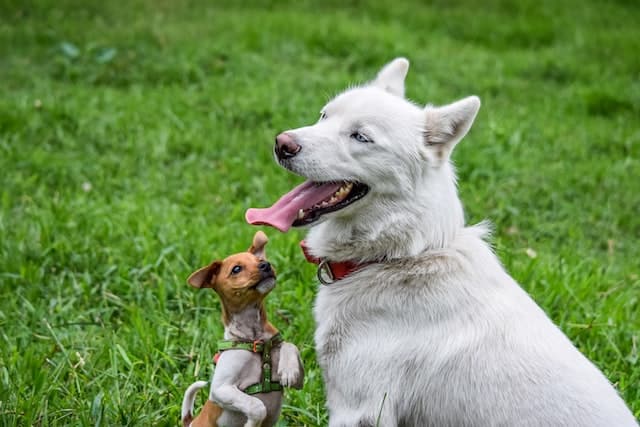A blue heeler lab mix is a cross between a Labrador Retriever and an Australian Cattle Dog, also known as a blue heeler. As a mixed breed, these dogs can vary in looks but generally have a heeler’s athletic build and a Lab’s size. Their coats are often a distinctive black, brown, and white mottled pattern.
Energetic and intelligent, blue heeler lab mixes need plenty of daily exercise and mental stimulation. They make excellent hiking and jogging companions. Their herding instincts should be monitored around young children. These hybrids can be loyal family pets and hard-working herding dogs with proper training and socialization.
Their high energy makes them best suited for active owners with time to train and exercise them properly. Blue heeler lab mixes can be wonderful working dog companions when cared for responsibly.

blue heeler lab mix Complete Overview
The Blue Heeler Lab Mix is a medium to large-sized dog breed. It can weigh between 30-80 pounds. Lab blue heeler mixes inhibit certain traits from their purebred parent breeds. It boasts a unique and striking appearance. Exhibiting a strong and muscular build, this labrador mix stands between 17 to 24.5 inches.
The crossbreed dogs may lean more toward one of their parents. They can also display an even mix of qualities from both purebred parents. Their coats can be either short like a Labrador or sleek like Blue heelers.
Lab/heeler mix can exhibit solid hues like black or chocolate. Patches or speckles in shades of blue merle can also be inherited from the Blue heelers. They have powerful hindquarters that enhance their agility and athleticism. Both parents are purebred dogs renowned for their working dog status.

Personality Traits
The Lab Blue Heeler Mix is an intelligent, loyal, active crossbreed. These mixed breeds have an innate desire to please their owners, making them highly trainable.
They are affectionate towards their families and other pets. The Labrador Heeler mix loves playing with toys and going on long walks or runs. Agility training or scent work helps stimulate them mentally. They may possess a strong herding instinct due to their Australian heeler background. Here are some additional things to consider before getting a Blue Heeler Lab mix:
- They are not suitable for apartment living. They need a lot of space to run and play.
- They may not be good with small children. They can be nippy if they are not properly socialized.
- They are barkers. They may bark excessively if they are not trained to be quiet.
Energy Level
The heeler lab mix dog is a high-energy dog. They love to run, play, and explore their environment. They are great for families with an active lifestyle.
Daily physical activity is essential to keep Blue Heeler Lab Mix in good shape. A couple of walks daily or playing fetch help burn off excess energy. Without exercise, the pent-up energy can result in destructive behaviors.
blue heeler lab mix Size
The Blue Heeler Lab Mix ranges from 17 to 24.5 inches and weighs between 30-80 pounds. The medium-sized dog is muscular and athletic. Each dog may vary slightly in size due to its parent breed differences. Be prepared for the potential sizes of both breeds when purchasing or adopting this energetic dog.
Coat Colors
The Blue Heeler Lab Mix comes in various eye-catching coat colors. Common colors include black, white, brown, and golden.
The Lab Blue Heeler Mix may have speckled or mottled patterns on their double-layered coat. It is due to their Blue Heeler parent. These unique markings are called “merle” and are blue, red, or chocolate. These coat colors are strikingly beautiful but do not guarantee the dog’s temperament or health status.

The History Of The Labrador Blue Heeler Mix
The exact origins of this hybrid dog are unclear. It has emerged in recent years due to growing interest in crossbred dogs. Reading about the parent breed histories will help us know these active dogs better.
Blue Heelers
The Australian Cattle Dog ( Blue Heeler) developed in Australia during the late 1800s for herding cattle in rough terrain. The American Kennel Club did not recognize these good herding dogs until 1980. Blue Heelers became trademarked when Harry and Jack Bagust introduced kelpies and Dalmatians. They got their speckles from the Dalmatians.
Kelpies offered Black and tan kelpies’ markings, intelligence, and bravery. The crossbreeding resulted in a dog with strong herding instincts. They adapted as working dogs for long hours in the Australian climate.
Blue Heelers are stubborn and can get bored easily. Early socialization and proper training are a must. The blue heeler is happiest around their owners and can suffer from separation anxiety when left alone for long hours. They are best suited for experienced dog owners.
Labrador Retrievers
The Labrador retriever originated in Newfoundland, Canada, in 1800 and was called St Johns water dog. The St John’s dog worked alongside fishermen and helped pull the fishing nets.
The English aristocrats made the purebred dog more popular during the 1800s. They found the dog’s gentle nature and retrieving instincts ideal for fowl hunting. Since then, the labs have gotten the name Labrador Retriever. They have an easygoing, cheerful nature, making them good family dogs.
They are highly adaptable and easily trainable. It makes them ideal service dogs. Moreover, they are popular for getting mixed with other dogs. They are highly energetic dogs and need at least an hour of exercise daily.
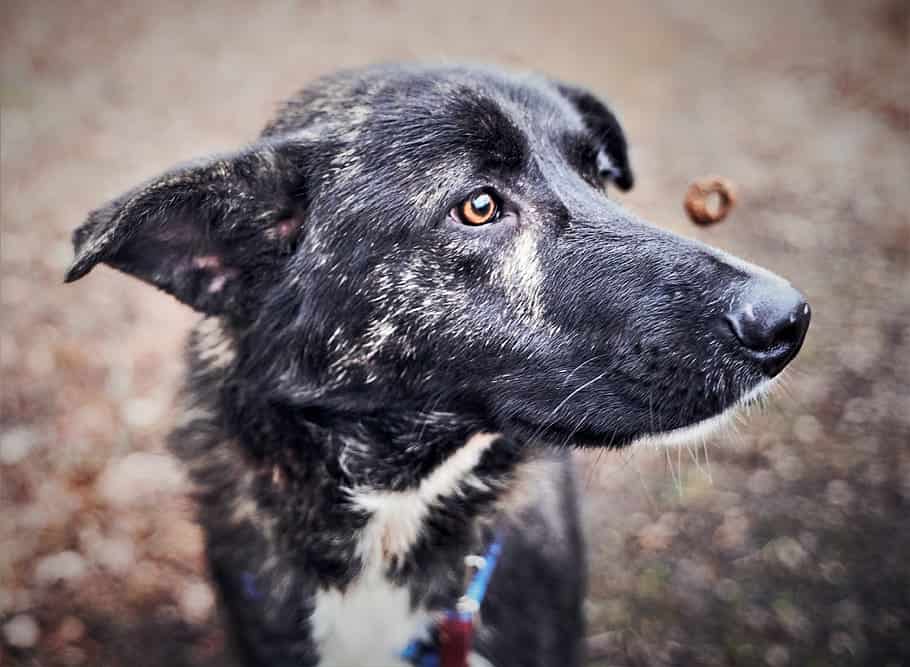
How To Care For Your Labrador Blue Heeler Mix?
Exercise, training, a nutritious diet, regular grooming, veterinarian check-ups, etc., are essential for optimum dog health.
Exercise
The Blue Heeler Lab Mix requires significant exercise to maintain its physical and mental well-being. This breed requires at least 60 minutes of exercise daily. It includes activities like playing fetch, walking, or hiking.
Get your labrador heeler mix vigorously exercised for a peaceful household. Depending on the traits inherited from their parent breeds, they will need various exercises. Split the exercise into short sessions. The labrador heeler mix recovers its energy quickly. They will likely be boisterous by the afternoon if you tired them in the morning.
The heeler lab mix excels in canine sports. Agility, flyball, obedience, nose work, etc., increase their confidence. These mixed breeds make excellent biking or running partners. The Blue Heeler Lab Mix needs mental exercise to prevent boredom and destructive behavior. Engage them with interactive toys or puzzles.
Training Needs of Lab Heeler
This mixed breed responds well to positive reinforcement techniques like treats or praise. Avoid harsh training methods as they may lead to fear or aggression.
- Consistency is crucial for this highly trainable breed. Establish clear rules and consistent routines right from the beginning.
- Teaching your Blue Heeler Lab Mix new tricks help form a dog-owner bond. Do more than just obedience training and utilize their instincts.
- Focus on their herding ability and promote their instincts. First-time trainers should opt for professional training.

How To Socialize A Blue Heeler Labrador Mix?
Socializing the Blue Heeler lab mix is crucial to keep protective instincts in check. Idea age for socializing blue heeler mixes is between 7 weeks and 4 months.
- Introduce them to different people, animals, and environments. It will make the hybrid breed comfortable in adapting to any environment.
- The Blue Heeler labrador mix can be overwhelming if not socialized properly.
Feeding And Grooming Requirements
Proper feeding and grooming are essential for a healthy dog. Here are some tips for caring about their nutritional and grooming needs:
Feeding
Provide your Blue Heeler Lab Mix with a balanced and nutritious diet. This breed enjoys high-protein meals. Consider incorporating lean meats, fish, or poultry into their diet. Avoid overfeeding and give them access to fresh water at all times.
You can provide a raw diet to maintain the dog’s health in the long run. Adjust the food frequency and amount according to your dog’s weight. If your Blue Heeler lab mix has higher energy, it will need frequent feeding.
Grooming
The Blue Heeler Lab Mix has a short but dense coat. Brush their coat regularly to remove old hair and allow new hair growth.
- You will need to brush them regularly to remove loose fur.
- Bathe them every other week using a dog-specific shampoo to prevent skin irritation.
- Trim their nails regularly to avoid discomfort or injury.
- Clean the dog’s ears weekly using a damp cloth to reduce infection risks.
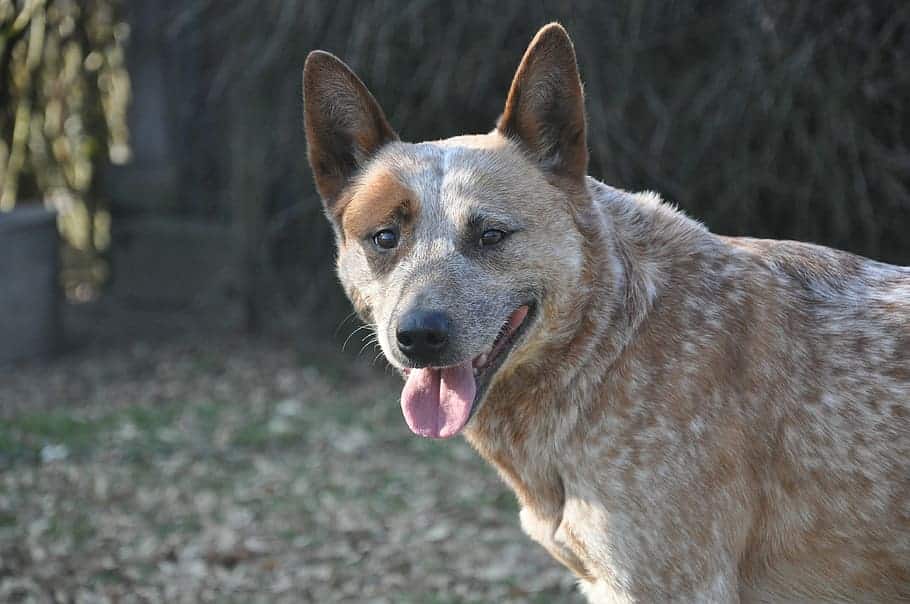
Common Health Concerns
Despite being healthy breeds, Labraheelers are prone to some common health issues. Regular veterinarian check-ups and preventative care will keep your Blue Heeler Lab Mix healthy.
Hip and Elbow Dysplasia
It is a common concern in medium-large dogs, including the Australian cattle dog and lab mix. It can be prevented by giving a proper diet for bone development. Provide these active dogs with adequate exercise for good joint health.
Progressive Retinal Atrophy
PRA is a degenerative disease that can lead to blindness. The early onset is visible in puppies between 2 and 3 months. 3-9-year-old dogs experience the late onset of progressive retinal atrophy.
Muscular Dystrophy
It is a hereditary illness commonly found in newborn dogs. Excessive drooling, vomiting, exercise intolerance, etc., are common symptoms.
Congenital Sensorineural Hearing Loss
This is caused by genetic mutation and is common in mixed breeds. It is more common in Australian Cattle Dogs than in Labrador Retrievers. It is unavoidable.
That is why checking parent breeds history is important. A reputable breeder will provide the right dog compared to puppy mills. Also, avoid pet stores as they are unhealthy. Other health issues include Lymphoma, Arthritis, patellar luxation, etc.
Living Environment required for lab cattle dog mix
The Blue Heeler Lab Mix requires ample space to run and play. They thrive in a home with a large yard, farm, or ranch. Regarding living arrangements, lab heeler puppies thrive best in homes with loving owners.
They provide them with enough attention and training. Daily walks, off-leash time at dog parks or on beaches, and running outside keep this breed busy and happy.
Is A Blue Heeler Lab Mix Right For You?
Consider your lifestyle before adopting a Blue Heeler Lab Mix. It is best suited for active owners who can dedicate time to exercise and training.
Lifestyle Considerations
Before bringing a Blue Heeler Lab Mix, you’ll need to consider their active and energetic personality. This crossbreed dog is high-energy and requires plenty of daily exercises and mental stimulation. This breed thrives in environments where they can run freely. A large backyard or living on a ranch or farm would suit this mix.
Activities like hiking, running, swimming, and playing fetch are great ways to keep them happy and stimulated. Remember that this crossbred dog is highly intelligent and trainable. It means they require an owner who can dedicate enough time to train them correctly.
Compatibility With Children And Other Pets
The Blue Heeler Lab Mix is a friendly, affectionate, loyal dog. It usually gets along well with children and other dogs. When introducing a new pet into the household with an existing pet, do so gradually.
Start by having them meet in a neutral location outside the home where they can sniff and interact. It will prevent a territorial feeling. Blue Heeler Lab Mix is a family dog. It thrives in households with plenty of love and attention.
Choosing The Right Breeder for Blue Heeler Lab
Choosing the right breeder is crucial. Ensure you get a healthy and happy pup from someone who properly cares for them.
- Look for breeders with experience with this particular crossbreed. They will know their traits, temperament, and health concerns.
- One way to find a reputable breeder is by researching online or through referrals from friends or family members.
- A good breeder can provide past puppy buyers’ references and answer any questions. They allow you to meet their dogs before committing to purchase one.
Blue Heeler Labrador Mix Rescues
Are you looking forward to adopting rather than buying? Seek out rescue organizations and animal shelters that specialize in this breed mix. Rescue dogs can make wonderful pets since most dogs have some basic training and socialization skills. You can save a dog’s life by rescuing them from an animal shelter. Here is a list of shelters in the US specializing in the Blue heeler lab mix –
blue heeler lab puppies Price
Blue heelers and labrador mix puppies are usually sold for $ 500 and $ 1500. These puppies are born with white fur, similar to the Dalmatians. Ask about the parent’s genetic history before making a purchase. You can adopt from animal shelters for a pocket-friendly purchase.

Products That Can Help Raise A Blue Heeler Lab
PetSafe Easy Walk Front Clip Harness
This PetSafe dog harness is perfect for leash training. It will prevent your dog from pulling or choking during the training. It fits perfectly around the chest and gently redirects your dog when needed. This front clip harness is comfortable and safe for your Blue Heeler Lab.
Midwest ICrate Starter Kit
The right crate can make all the difference in your dog training approach. This crate from Midwest will make your dog relaxed and easy. It is big enough to accommodate your dog and its belongings. Besides, it allows your dog to stand inside comfortably.
Merrick’s Power Bites Training Treats
With two delicious flavors, this training treat makes it to the top options. They will help keep your dog’s attention intact with its yummy taste. Opt for these treats and say no to negative reinforcement methods. These natural treats are safe and free from artificial flavors, making them an ideal option.
Natural Dog Company Sensitive Skin Dog Shampoo
This dog shampoo is free from paraben and sulfate. It is perfect for a dog with dry and itchy skin. This natural shampoo can reduce shedding and produce a healthy and shiny coat. Containing plant-based ingredients, it will keep your dog smelling fresh. Besides soothing irritated skin, it also keeps dandruff at bay.
Key Takeaways: Conclusion
- The Blue Heeler Lab Mix is a crossbreed of the Australian Cattle Dog and Labrador Retriever. They are energetic and loyal.
- This mixed breed requires daily exercise and mental stimulation for physical and mental health. They enjoy playing fetch, long walks, agility training, or scent work.
- Proper feeding and grooming are essential. Give them balanced meals based on size, age, and activity level.
- Groom their fur frequently to remove loose hair and debris. Bathe them as needed using dog-specific shampoo, trim their nails regularly, and clean their ears weekly.
- Regular visits to the veterinarian identify potential health issues early on. Common concerns include hip dysplasia, eye problems, obesity, and deafness.
FAQ
Are Blue Heeler lab mix good dogs?
Labraheelers, also known as Blue Heeler lab mixes, have the potential to become excellent pets. They are smart, active, devoted, and suitable for households with kids and other animals. Nonetheless, similar to all breeds and mixes, their disposition and conduct may differ based on their individuality, upbringing, and social interactions.
How much does a Labraheeler cost?
On average, you can expect to pay anywhere from $750 to $1250 for a Labraheeler puppy. Keep aside 1500$ for maintenance.
What is the temperament of a lab cattle dog mix?
These dogs possess remarkable intelligence, high activity levels, and unwavering loyalty. Their innate herding instinct may compel them to herd people or animals, which can lead to behavioral problems. Providing them with proper socialization and training is imperative to avoid such issues.
How big does a Labraheeler get?
Labraheelers can vary in size depending on their genetics and breeding. Generally, they are medium-sized dogs, with an average height of 18-24 inches and 30-60 pounds.
How do you train a Labraheeler?
Training a Labraheeler requires patience, consistency, and positive reinforcement. Intelligent dogs respond well to positive training methods like clicker or reward-based training. Socialization is also important to help them behave well around people and other animals.
What is the personality of a cattle dog lab mix?
Their training and personality can influence the behavior of a cattle dog lab mix. In most cases, they are smart, energetic, and devoted canines with a potential inclination for herding or raising cattle. They can be excellent companions for kids and other animals with proper socialization and training.
Are red heelers good house dogs?
With appropriate training and socialization, Australian Cattle Dogs, commonly known as Red healers, can make excellent house dogs. Their high intelligence and energy levels require sufficient physical activity and mental stimulation.
It’s important to remember that they may have a strong instinct to herd, which could lead them to try and herd people or other animals in the household.
How long do Red Heelers lab mix live?
On average, they can live for 12-15 years with proper care and nutrition.
Are Labraheelers Aggressive?
Labraheelers are gentle and playful mixes. You will not see them as aggressive without any reason. However, they may act protective while responding to threatening situations.
Are Labraheelers Cuddly?
Labraheelers love their human companions and will happily curl with them. However, their energy will make them get up quickly and jump into other activities.
Author Profile

- In House Labrador Trainer
- Samta is an experienced Labrador trainer and enthusiast with over 5 years of hands-on experience, contributing invaluable insights and advice to Labradorandyou.com. Her deep understanding of Labrador temperament and intelligence underpins her effective training techniques and product recommendations. Through firsthand experience of the joys and challenges of raising Labradors, Samta's articles provide expert advice for both seasoned and new Labrador owners, covering training, care, and innovative product selection. Her commitment to enhancing the well-being of Labradors and their owners permeates her work, making it an indispensable resource for Labrador enthusiasts
Also by the author
-
 FAQNovember 16, 2023Why Is My Dog Pooping So Much? MUST KNOW Facts
FAQNovember 16, 2023Why Is My Dog Pooping So Much? MUST KNOW Facts
-
 FAQNovember 16, 2023Why Is My Dog So Skinny? 9 Reasons With Solutions
FAQNovember 16, 2023Why Is My Dog So Skinny? 9 Reasons With Solutions
-
 Mix-BreedsNovember 16, 2023Straight Haired Labradoodles Complete Guide: All You Need To Know
Mix-BreedsNovember 16, 2023Straight Haired Labradoodles Complete Guide: All You Need To Know
-
 Lab-TypesNovember 6, 2023Block Head Labs: Are They Better And Healthier?
Lab-TypesNovember 6, 2023Block Head Labs: Are They Better And Healthier?
